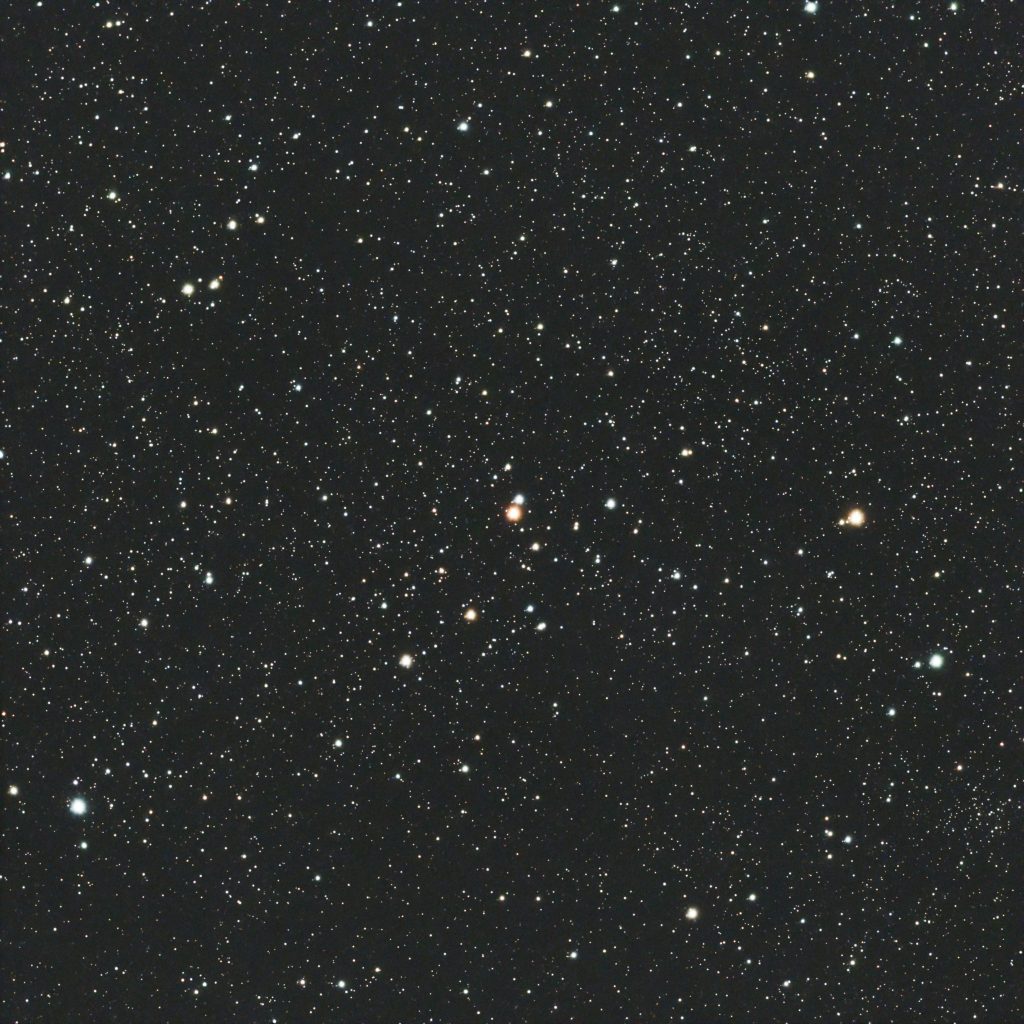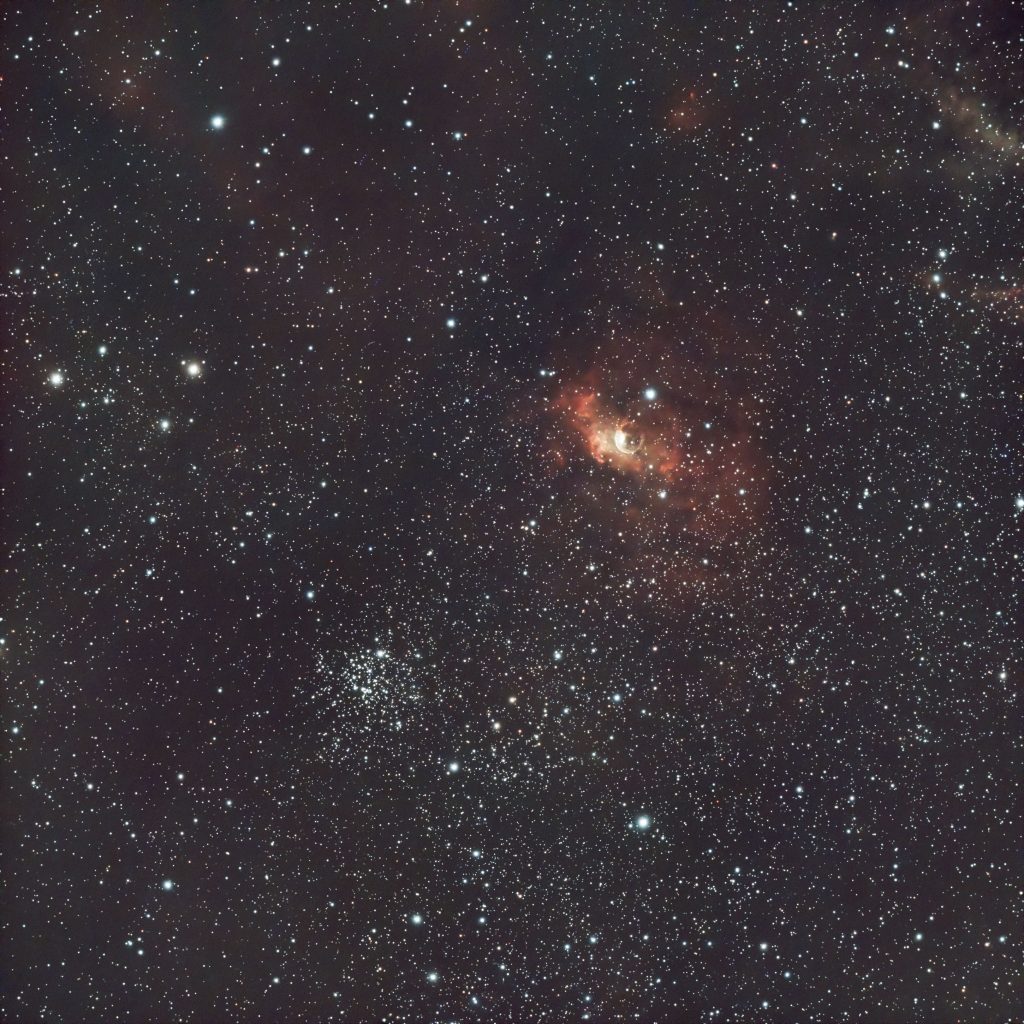
As northern autumn turns to winter, the arc of the northern Milky Way reaches nearly overhead in the evening hours. Here we look into the Perseus Arm, the outermost spiral arm of the Milky Way galaxy which is flecked by dozens of sparkling open stars clusters accessible to a small telescope. This region nearly rivals the dense star fields of Scutum and Sagittarius, summer constellations which lie towards the inner arms of the Milky Way. This month, let’s take a quick tour of a few highlights of the Perseus Arm in the constellation Cassiopeia. It’s a perfect part of the sky for visual observing or for taking a few astro-snapshots.
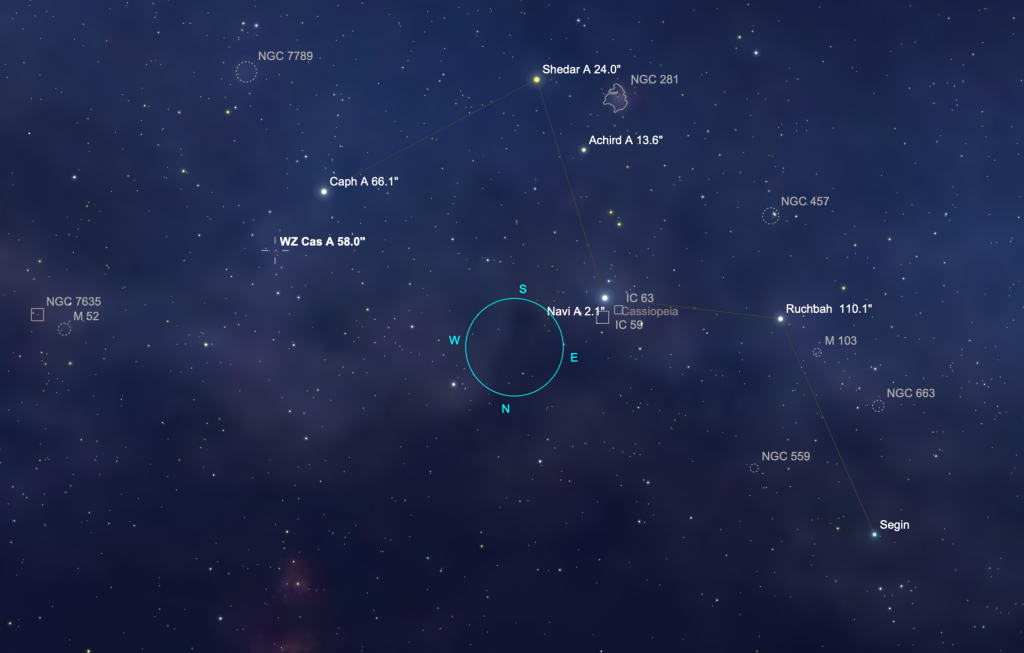
Messier 103
Cassiopeia is chock-a-block with relatively bright open star clusters, so it’s a little surprising that Charles Messier cataloged only two objects here. Of his original 103 entries in his catalog of non-stellar objects, the cluster M103 is the last (the catalog was later padded to include 7 more objects). M103 is easy to find, about a degree northeast of Ruchbah, or delta (δ) Cass. At 8,500 light years away, it’s one of the most distant open clusters in Messier’s catalog. In a small scope, the cluster is unmistakably triangular and displays perhaps two dozen stars. The star triple star Struve 131 is the bright star at the north vertex of the cluster; you can easily resolve all three stars in Struve 131 in a scope, even at low power.
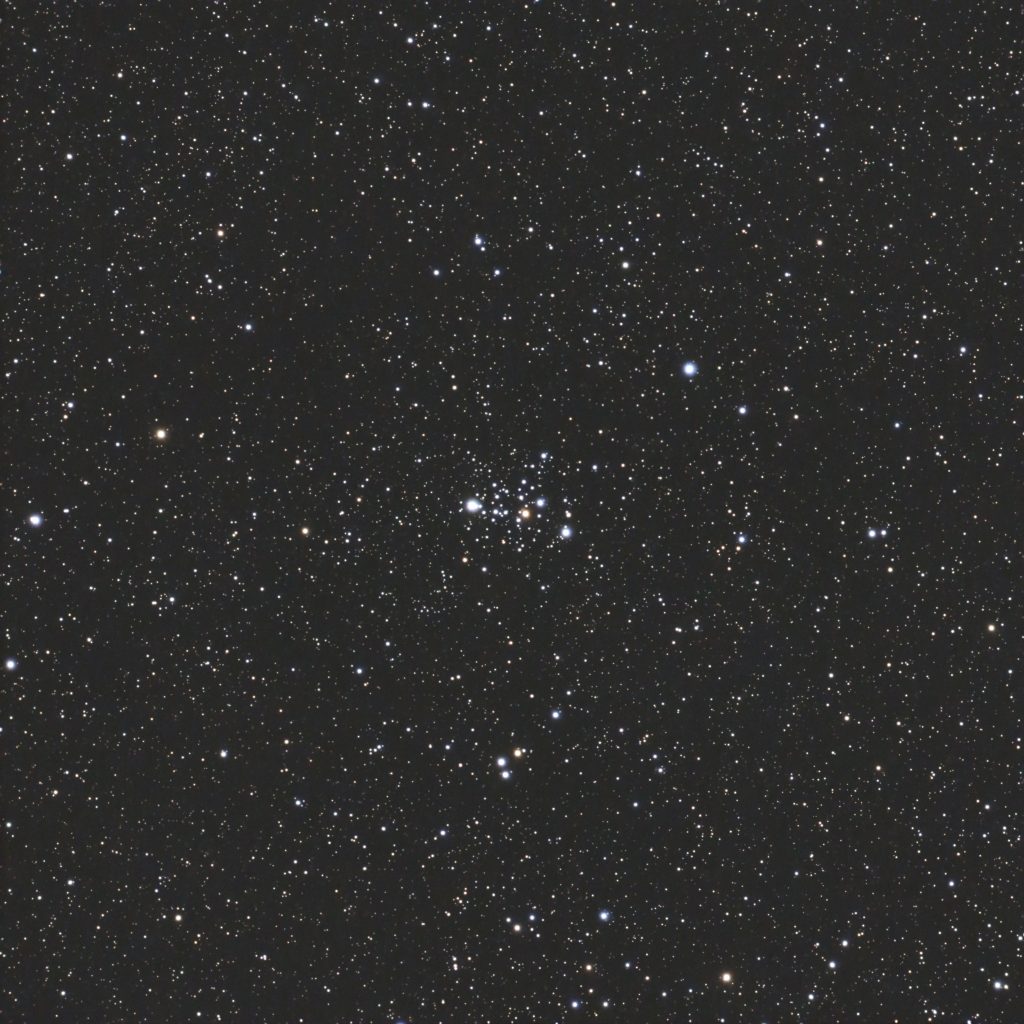
NGC 663 and NGC 658
Just 1.5o east of M103 lies NGC 663, a remarkably beautiful star cluster that Messier somehow missed. While less concentrated than M103, NGC 663 is 30% brighter and 1,000 light years closer and bright enough to be visible with the unaided eye in dark sky. While M103 is distinctly triangular, NGC 663 takes on a “U” or horse-shoe shape, with two pairs of double stars terminating each arm of the U. In a 4-inch scope, the central starless dark lane is immediately apparent, and roughly 40 stars populate the main part of the cluster, with many arcing bands of fainter stars radiating off the main structure.
About 1o north-northwest of NGC 663 is the smaller cluster NGC 654, a small, pretty patch of a dozen faint stars in a 3-inch scope at 60x. South-southwest of NGC 663, look for the fainter NGC 659 which reveals perhaps 10 stars in a small scope. Both M103 and NGC 663 are part of an associated group of young stars called the Cassiopeia OB8 Association. Astronomers have found that NGC 663 has at least two dozen massive “Be” stars, which are rapidly-rotating hot blue stars that shed mass into a tenuous ring or shell.
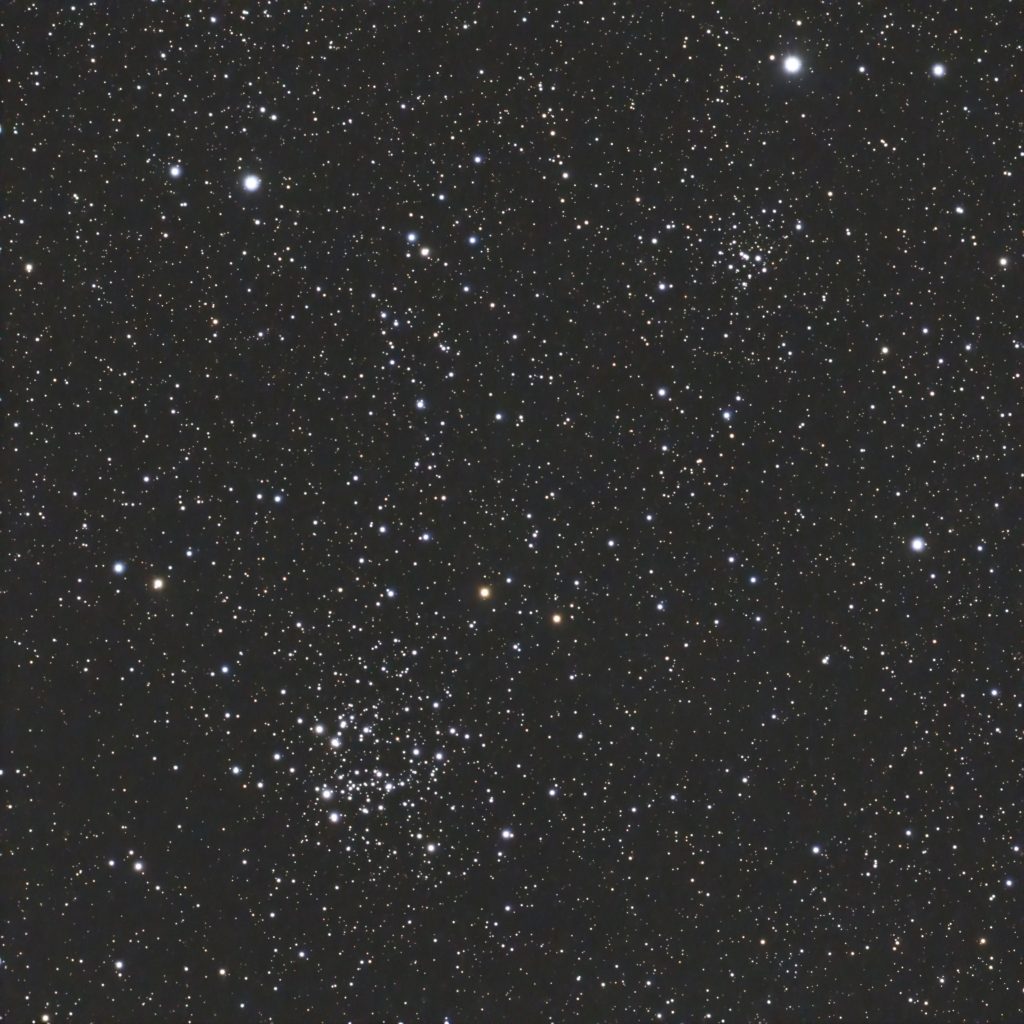
NGC 7789
About 1o southwest of beta (β) Cass we find the large and uniform open cluster NGC 7789. It was discovered by Caroline Herschel in 1783, and her nephew John Herschel called it a “most superb” cluster. And indeed, it is!
This cluster is very old for a galactic cluster, perhaps 1 billion years. It’s also distant, more than 8,000 light years away. Because it’s so old, many of its initially blue-white stars have turned into red giants, so the cluster is also quite colorful.
You can’t resolve NGC 7789 in binoculars, but a 3-inch scope at 50x to 80x resolves a spray of tiny pinpoints of magnitude 11 and 12 stars on a hazy background. This open cluster, unlike many, looks better with higher magnification. An 8-inch scope reveals a hundred more and clearly resolves this massive and ancient group of some 600 stars. After inspecting this fine stellar group in detail, drop magnification as low as you can to scan its immediate surroundings for the lanes of dark nebulae in and around the cluster.
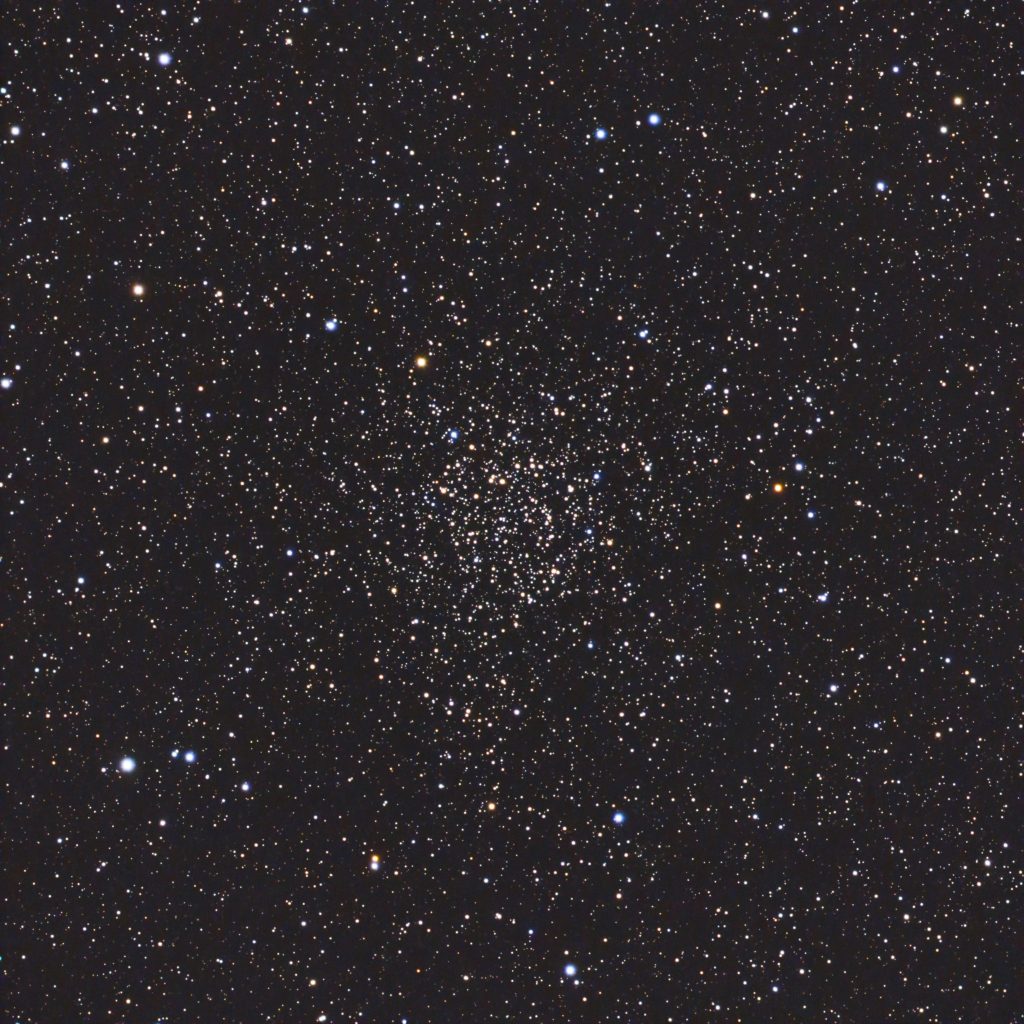
M52 + Bubble Nebula (NGC 7635)
After M103, Messier’s other cluster in Cassiopeia is M52, a young cluster born 60 million years ago compared. It’s easy to find… just continue a line from Beta Cass (Shedar) to Alpha Cass (Caph) a little more than the distance between the two. It’s visible in binoculars as a hazy patch of magnitude 7. Visually, a 4-inch telescope will reveal a few dozen mostly blue-white stars, and a couple of yellow giants which evolved off the main sequence. The cluster is fairly tightly packed and harder to resolve than NGC 7789 and not nearly as rich. It looks small because it’s far away… about 5,000 light years. In the 1800′s, John Herschel saw the cluster as round, while the redoubtable amateur Admiral Smyth saw it as triangular or fan-shaped.
About half a degree to the southwest of M52 is another photogenic object (NGC 7635) – see image at the top of this page. It’s a standard emission nebula with a remarkable central bubble blown out by a hot central blue star. It’s often called the Bubble Nebula. While it’s a splendid target for astrophotographers, visual observers need dark sky to see it at all – and a nebula/UHC filter helps. The full nebula spans about 15’x8’ in extent, but the view is tenuous, and you need to use averted vision and a lot of patience in a smaller instrument. The bubble is only a small subsection of NGC 7635, about 3’ in diameter, and even more challenging to see. You need at least a 6-inch scope to see it visually and a larger scope to see any detail. It appears as a faint ring-shaped region of gas around the 9th-magnitude star SAO 20575.
WZ Cass
Let’s finish not with a star cluster but the deep-red carbon star (link to CP article), WZ Cassiopeiae. Like all carbon stars, WZ Cass is evolved star that’s churning up carbon produced by nuclear fusion reactions in its core. The carbon atoms form small molecules in the star’s atmosphere, and these compounds preferentially absorb blue and yellow light from the lower layers of the star, which leaves only red-orange light to stream outwards. It lies about 1.8o NW of Caph and shines about magnitude 7.0, though its brightness varies from 6.3-8.8, roughly, over about 370 days as the star coughs and sputters on its way to its demise.
